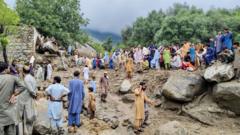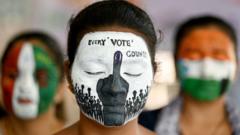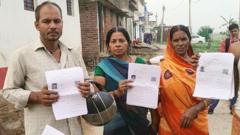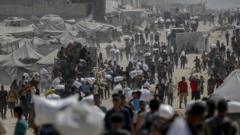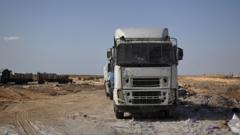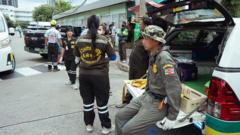Recent findings from a BBC investigation expose a higher death toll than officially accounted for in the Kumbh Mela tragedy, as families of victims receive compensation under contentious circumstances.
Hidden Tragedies: Unveiling the Truth Behind the Kumbh Mela Crowds
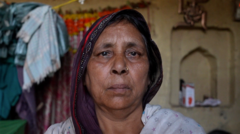
Hidden Tragedies: Unveiling the Truth Behind the Kumbh Mela Crowds
An in-depth investigation reveals unreported deaths and discrepancies in compensation following the Kumbh Mela crowd crush in India.
A recent investigation conducted by BBC Hindi has exposed a troubling reality behind the deaths occurring during the Kumbh Mela, the largest religious gathering in the world, held annually in India. While the official death toll stands at 37, BBC reporters have uncovered evidence suggesting that the number of fatalities is significantly higher, revealing a total of 82 confirmed cases where families of victims received compensation.
On January 29, at the Holy Prayagraj site, tragedy struck as thousands crowded for rituals, leading to a deadly crush. Despite the Uttar Pradesh government claiming to have adequately compensated victims' families with 2.5 million rupees (approximately $5,758) each, many received only a fraction of this amount. Surprisingly, some families were handed cash directly at home, while others reported being pressured to sign documents attributing deaths to health issues, rather than the chaos of the crowd.
The investigation uncovered instances of misreported death locations, raising concerns that officials aimed to minimize the scale of the disaster. Eyewitness accounts reveal the extent of loss suffered, with families waiting hours with the deceased before receiving any assistance. Numerous victims’ families displayed trauma not just from their losses but also from the lack of acknowledgment by the state regarding the causes of their deaths.
Even while the state extends its investigation into this calamity, BBC reporters documented over a hundred accounts from grieving families nationwide. They verified at least 82 deaths, pioneered a chronological reconstruction of incidents leading to the disaster, and pinpointed multiple locations intertwined with the tragedy. However, some remain without compensation while others face bureaucratic obstacles.
In the aftermath of this devastating event, attention has shifted toward holding authorities accountable. The continuous anguish of families left behind highlights both a tragic loss of life and an urgent need for transparency and reform in how such incidents are managed and reported. With no concise explanation or sufficient remedy for the bereaved, the fallout from this catastrophe expands, sparking outrage and calls for justice across the nation.

